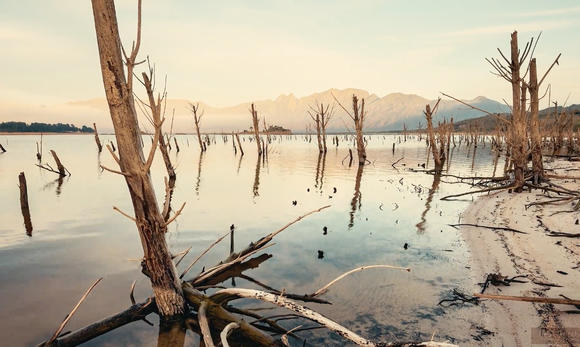Liesel Kershoff is a South African landscape and time-lapse photographer. She’s based in Caledon, in the Western Cape in South Africa. When she was a child she used to walk down to the Bath River and enjoyed sunsets with her cat and her dog.
I have always had a close relationship with nature and was certain that I would become a wildlife photographer one day.
After graduating from high school, she decided to travel the world. At one point, she worked at a flower farm in Israel and keept travelling and in her spare time. After a while on the road, she decided to start a fruit and vegetable shop with her sister back home.
It wasn’t until her husband bought her her first SLR camera (film) that she decided she wants to be a photographer. She enrolled in a home course and found her calling.
While slowly working my way through the course, it became clear that I had no interest in any other genre than landscapes and I dropped out when the course veered into studio- and other photography.
A few years later, she sold her shop, bought her first DSLR and never looked back.
Over the years, Kershoff started shooting time-lapses as well. And one of her recent projects is our new video of the week.
In close proximity to Caledon, Kershoff’s hometown is the 7th largest freshwater catchment dam in South Africa, called Theewaterskloof Dam. In the 1980s when the dam was completed, it flooded the farm houses and infrastructures in the area and also a forest of pine trees, which eventually died. Her video ‘A Drowned Forest Exposed’ is a picture of that previously flooded pine tree forest.
These dead trees have become quite famous amongst photographers and provide fantastic photo opportunities when water levels are low. It is a mere half hour drive for me and a favourite shooting location ever since I started photography. I know this landscape like the inside of my hands.
Recently the water levels of the dam dropped significantly.
Arriving at the location I was shocked at the devastation a mere 2 months of drought has caused on the water level of the dam and I decided to document the drowned forest which were slowly rising out of it’s watery grave. I also felt an obligation as a photographer to bring the drought closer to home to people who cannot see it for themselves, but also to document a landscape which is usually hidden under water.
In her film, Kershoff used compositions she took two months before the drought and was able to compare the landscape before and after the water disappeared. It took her three months to complete the project. The result is a touching visual story about what is, what could be, and what will never be again.
This project has reminded me of life’s yin and yangs. To appreciate the yang in life, we need to experience the yin. Nature is teaching us a lesson. We need to take notice and learn from our mistakes and stop wasting our resources.
At the end of March 2017, Kershoff wrote that the water situation in Western Cape is becoming serious, the dam level was at 20 percent and only 10 percent of that was usable drinking water. The Theewaterskloof Dam used to provide the greater Metropole of Cape Town with fresh drinking water. Although June rains have increased the water levels somewhat, the Western Cape is still experiencing a crisis and water shortage.
See the amazing and very important video by Liesel Kershoff and if you can, watch it in 4K, it’s worth it!

A Drowned Forest Exposed 4K
Follow Liesel Kershoff on her website | Facebook | Twitter | Vimeo.

Leave a Reply